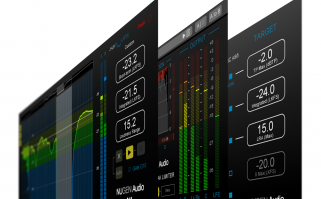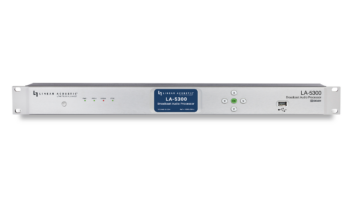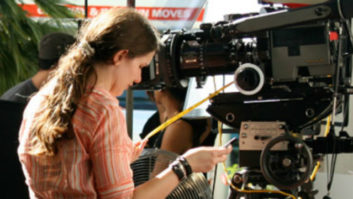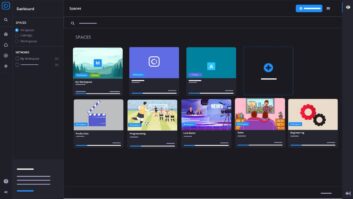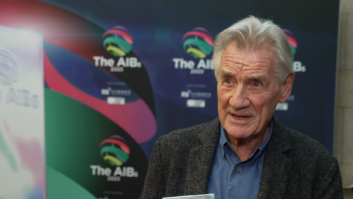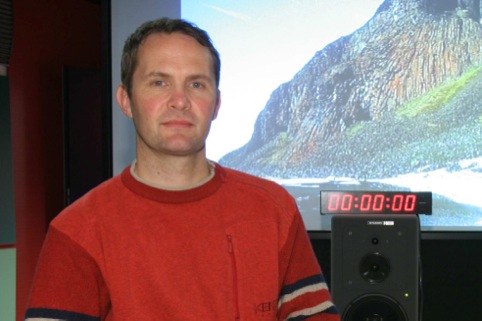
In this Forum, Philip Stevens seeks the views of industry experts about the niggling question of loudness.
The questions surrounding loudness don’t want to go away. Several European countries have adopted the Technical Delivery Specification for Loudness, but is it working? Are there problems implementing the standard? Where next on this thorny issue? Some people in the industry seem happy to discuss that matter – others are reluctant.
We’ve brought together professionals closely involved with the topic who are happy to air their views. They are (in alphabetical order) Kevin Burrows, CTO broadcast and distribution, Channel 4, and DPP tech standards lead; Florian Camerer (pictured), senior sound engineer, ORF Austrian TV and chairman EBU group PLOUD; Tim Carroll, CTO The Telos Alliance/Linear Acoustic; Bob Nicholas, director business development EMEA at Cobalt Digital; Mark Pascoe, senior technical marketing manager, Dolby Laboratories; Steve Plunkett, CTO, Red Bee Media; Peter Schut, CTO and vice president of R&D at Axon; Richard van Everdingen, broadcast and audio consultant
TVBEurope: Last October saw all UK national broadcasters accept the DPP’s Technical Delivery Specification on Loudness standards. Although early days, have any significant issues come to light since the implementation of the standard in the UK?
Burrows (pictured): Nothing major, but there are some learning points, such as trust your audio skills and your ears, set your monitoring levels with care to help you hit the right loudness balance point, try to stop using PPMs as soon as you can – this will take a little longer in post, but should be more than offset by a reduction in the time wasted by reworking rejected productions. And finally, applause at the end of performances can catch you out on live programmes if the rehearsals had none!
Camerer: No significantly different issues compared to other countries have arisen. The UK has the advantage of being able to draw on the experience of several other European countries and so should avoid the most common pitfalls. One approach is similar to France where the tolerance for live is initially +/- 2 LU, and for tape or file-based delivery is +/- 1 LU. This is looser than in R128 – it will be tightened later, but an understandable step to facilitate the transition. Also, R128 is not demanded yet, it is still encouraged.
Nicholas: The standard is still in the process of implementation and it is as yet too early to be able to have a view of any potential issues.
Plunkett (pictured): There has been a growing consensus that loudness is best dealt with at source, as the solutions that work on the live outputs of a channel don’t generally produce optimum results. Production companies are already expected to satisfy various technical and qualitative measures related to their programming, so this has been an expected and inevitable development. At the moment, everyone is familiarising themselves with new tools and procedures, but no major concerns have been identified.
Schut: There are always problems implementing a new standard and this is no exception. The biggest problem is that it is a complex exercise. Only if the producer of the sound is aware of the loudness requirements will you get good results. Anything that needs to be corrected afterwards – and especially legacy material – will have reasonable to poor results. Also the different formats that need to be supported and the complexity R128 advice for all different platforms does not help.
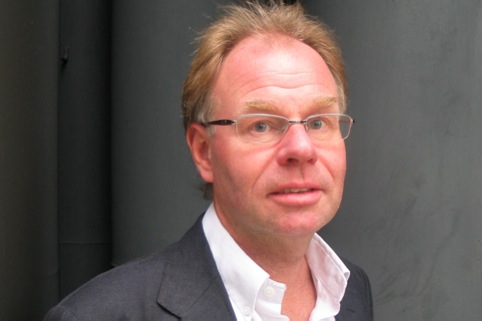

TVBEurope: How is the UK faring compared to other European broadcasters?
Camerer: The BBC has a head start in the UK because the average level has always been around -23 LUFS. There have been outliers, of course, but the principal production methods don’t have to change. BskyB has been doing loudness normalisation for years, so they have no issue whatsoever. I think the UK will generally catch up with the more loudness advanced countries in Europe quickly.
Carroll: In my opinion, quite well. Again, many broadcasters were far ahead of recommended practices, such as EBU R128 and other regulations, as they found that satisfying the viewer is simply good business practise.
Nicholas: The UK is certainly somewhat behind some of the primary European markets. France and Germany are leading the way in terms of implementation of R128 recommendations on loudness measurement and control. The continuing poor economic climate in the rest of Europe is affecting the ability of broadcasters in those most severely hit areas to implement corrective measures.
Plunkett: The UK has historically been one of the more active implementers of loudness control at the point of broadcast, which ironically has perhaps slowed the impetus for R128 adoption to date. However, the work of the DPP will bring the UK to the forefront of adopters by the end of 2014.
TVBEurope: Who, in your opinion (without naming specific companies), is the worst offender in the whole loudness debate?
Burrows: The industry with the largest challenge in this area is the pop music recording industry where hyper-compression is commonplace and often extreme.
Carroll: Anyone who does not realise that traditional metering like PPM or VU must take a secondary role to proper ITU-R BS.1770 loudness metering and EBU R128 recommended practices. This list is thankfully becoming smaller every day.
Nicholas (pictured): The worst offenders could possibly be defined as those advertisers who still try any dubious engineering practices to circumvent the recommendations and appear louder than the preceding content. Some broadcasters also could be included as they may consider that, as they do not carry advertising, they are exempt from loudness issues on programme transitions. Apparently, they do not consider interstitials as being advertising, although they are invariably generated by the same agencies that prepare conventional advertising material and usually to the same internal engineering practices.
van Everdingen: Some people are fundamentally opposed to the use of loudness normalisation. It is always difficult to convince someone who starts from the opposite direction. I see examples where this negative opinion is based on a wrong application of loudness normalisation. Consequently, before anyone can experience the advantages, and before a fair discussion about this is possible, it must start with a proper preparation, application and evaluation.
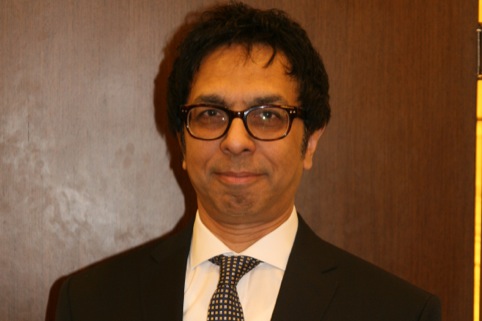
TVBEurope: Has the implementation of EBU R128 made any difference to working practices in UK studios and post houses?
Burrows: Yes it has, and has resulted in much more education and training to adapt to the new ways of dealing with sound mixing, production and monitoring. Initiatives like the BBC Academy training programmes have really helped the production community understand the new ways of working needed. The DPP has been pro-active in setting up workshops where audio loudness has been properly debated and concerns aired.
Camerer: The UK is still a hybrid loudness/PPM6 world. So initially there might be more different mixes to satisfy different specifications. Working practices change similarly in other countries. Mixers rely more and more on their ears – hopefully, they have done so anyway – but now they have a meter that corresponds with what they hear. If average loudness levels have been different from the new target level of -23 LUFS, the listening level has to be adjusted accordingly – up if you have mixed louder, down if you have mixed softer. Forcing oneself to mix to target through adjusting the listening level is the primary tool to success.
Nicholas: There has certainly been a change in approach in UK studios and post houses as they are all now aware of the nature of a loudness meter. They are also coming to terms with the fact that proper implementation of it should not have an adverse effect on the dynamic range of their productions.
TVBEurope: The standard provides two parameter requirements – loudness figure and dB True Peak. When a standard for loudness range is introduced, will this make a difference to working practices?
Burrows: By releasing the loudness spec, we have now standardised the loudness ranges together with tolerances for pre-recorded and live programmes. In terms of the two parameters you have listed, these refer to the overall programme loudness, and the Maximum True Peak. The latter of these, the Maximum True Peak values, are proposed as guidance only, together with examples as they can vary. Examples would be uncompressed music or gunshot sounds. This is a change to working practices compared to using conventional PPMs, as these only looked at average peak values, but it will be provide a much more subjective measurement.
Nicholas: This will only affect working practices in as much as new compliant metering will need to be implemented. Other than that it could be compared to the period when digital audio came into use and engineers had to get used to the idea of a relative 0dB level – which was actually different depending on which country you were located. The only major issue to get used to on a loudness meter is that what you are seeing indicated has already happened as the process is based on integrated measurement.
Schut: Sure, as they both have a very different outcome to the end sound and level. You can allow for some quite dynamic and still be compliant to the standard. But a completely compressed, dull soundtrack can also comply.
van Everdingen (pictured): I would advise against a restriction for loudness range (LRA), especially regarding drama series and films, or it must be recommendation for something in the area of not more than 22 or so, just as a safety precaution. A limit on a lower LRA means that some drama mixes that can be transmitted on television without any problem, need to be compressed just to comply with a certain number. What I found in my own research is that excellent mixes with good speech intelligibility and a consistent voice level close to programme loudness can have very high LRA figures up to 22 without causing a problem, not on the low and not on the high level side. Bad mixes on the other hand, tend to ‘improve’ to a certain extent by compression. This leads to the trend that good work is penalised because of the shortcomings of bad work. Other bad mixes that include annoyingly loud modulations can still have a relatively low loudness range. A limitation on LRA is, in that case, not able to prevent that – which can lead to even lower restrictions later on. The current LRA measurement is meant as an indicator for an audio mixer. To use it as a strict restriction in programme delivery documents is tricky. Currently, the PLOUD group is doing research to ascertain if the LRA measurement can be slightly optimised so that some specific mixes that have a high LRA number correlate better with the human perception. Even if it comes to an improved LRA measurement, extensive testing is required in my opinion before it is recommendable to use a certain number as a restriction, especially if this number is chosen relatively low.
TVBEurope: Are there special considerations when down mixing from Surround to Stereo using the Loudness standard?
Camerer: Unfortunately, it is not possible to predict the loudness of a downmix from surround sound to stereo, judging only from the downmix parameters. This is due to the different influence of the level of the surround channels, as well as the use of divergence – ‘bleed’ – of Centre signal into Left and Right. The more surround-heavy content you have – applause, for example – the bigger the loudness difference of a stereo downmix will be. There is no single solution to that. Best practice is to transmit two separate mixes, both loudness normalised – and not to rely on an automatic downmix at the consumer’s end.
Carroll: Downmixes can cause slight loudness variations which are completely programme dependent. This is why some of the regulations enacted throughout the world have a tolerance of +/- 1 to 2dB. Having zero tolerance may result in additional – and unnecessary – processing whose only goal is to satisfy a meter. This needs to be watched carefully as heavier processing is an easier and less expensive answer for compliance versus remixing but can often lower quality.
Plunkett: The loudness measurement on a down-mixed stereo audio can be significantly different than that measured on the discrete surround version, especially where there is a great deal of correlation between the channels as they are summed together. It is therefore important to check the loudness post down-mix and for sound supervisors to understand the possible consequences.
Schut (pictured): There shouldn’t be other than that some video formats require different levels.
van Everdingen: There can be loudness differences between multichannel audio and the down-mix. This is also affected by down-mix parameters such as the Centre and Surround down-mix levels. In practice, the down-mix level will fluctuate a bit if the multichannel programmes are loudness normalised. The broadcast station can check content in the ingest stage to prevent tricks being applied that make the down-mix unreasonably louder, for example in commercials. There is, however, also another way to work around the issue. In the Netherlands, the main stations use simulcast audio on cable networks. There is a dedicated stereo service and a separate service for multichannel audio. Dependent on the playback configuration, the viewer can choose the stereo or the surround service on IDTVs and set-top boxes. This offers the possibility to optimise both, independent from down-mix and up-mix issues.
TVBEurope: What is the next development on the Loudness issue?
Burrows: We are not currently planning any changes to the UK DPP Loudness specifications published last year, but we will monitor progress and if through experience we identify any areas requiring optimisation, we will consider making minor adjustments to the spec. In the meantime we will continue with our industry training and collaboration initiatives.
Camerer: The EBU Loudness group PLOUD is now looking at radio. Loudness normalisation in radio is the logical next step. There are a few differences and many things in common with TV. Once loudness normalisation is established in radio, it will have a strong impact on music production too, together with streaming services becoming more and more loudness normalised, for example, iTunes Radio.
Carroll: I believe this issue of tolerance has to be handled before processing is increased just to hit a meter-satisfying result.
Nicholas: I would predict that the next development in the loudness issues would be that all developers and vendors agree on the method to convey clear indications of whether a piece of audio content has been measured to a known standard and whether it was compliant. If processing has been applied that should also be indicated. This indicator should be able to be read by all consumer devices to prevent ruinous multiple loudness corrections being applied to a piece of content. It would be advantageous if such a process were also able to handle the advent of object-based audio that is now getting a lot of attention within our industry.
Pascoe (pictured): The EBU PLOUD group now have other platforms firmly on their radar; radio and cinema being amongst them. While the technical solutions for measurement are now in place, lack of industry consensus is most likely to be a barrier to adoption.
Plunkett: If we do a good job of introducing R128, the next development should be that loudness disappears as an industry and viewer concern. Let’s hope that we can do so.
Schut: I would expect some improvements in automated correction algorithms from different vendors. Implementing improved metadata where signals that are correct are left alone and not affected by downstream loudness controllers as proposed by Dolby. And I hope for better understanding of the problem where there is the most control – in production.
van Everdingen: The group is spending time on implementation issues and is also working on radio at the moment, particularly the alignment between DAB and FM radio.
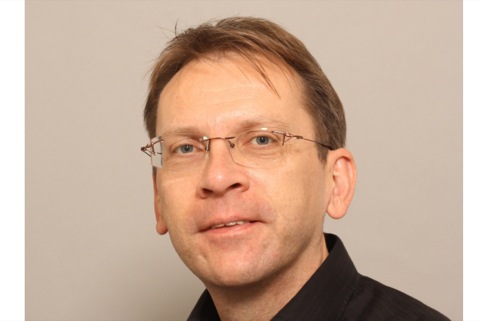
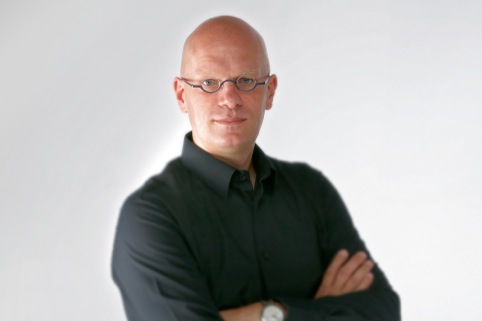
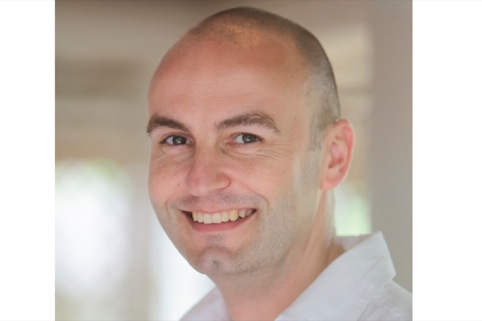
www.orf.at
www.axon.tv
www.channel4.com
www.cobaltdigital.com
www.delta-sigma-consultancy.nl
www.digitalproductionpartnership.co.uk
www.dolby.com
www.linearacoustic.com
www.redbeemedia.com
www.tech.ebu.ch/groups/ploud
